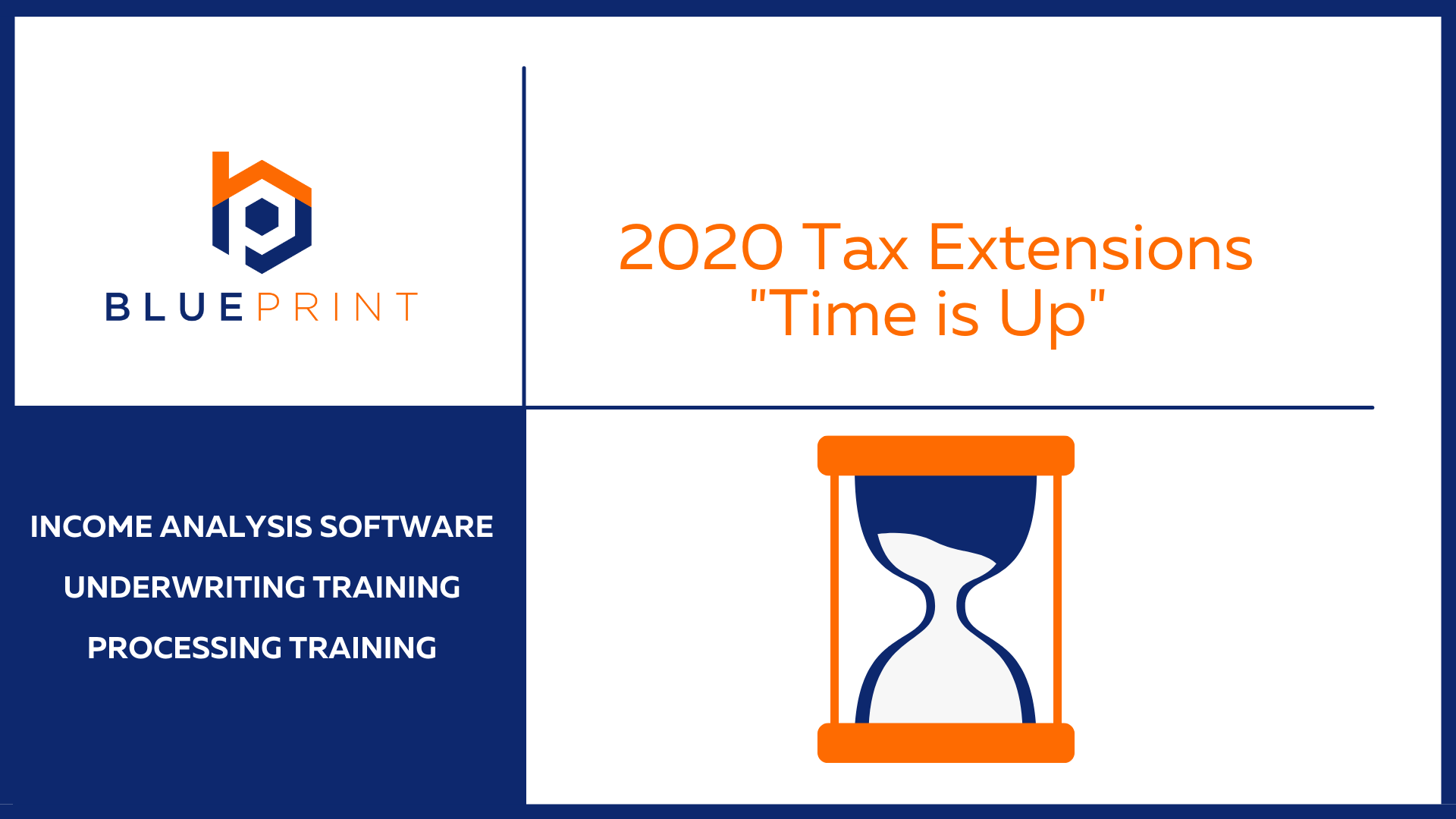October brings us into another fall season, with that comes a change in temperatures, your favorite football team may or may not be your favorite after September’s games, and the IRS loses it’s patience! That’s right, the IRS says as of October your procrastination comes to an end. This means all business and personal tax returns are now required to be turned in.
What does this mean for the mortgage business… Here are things I learned over the years!
The key date is application date NOT the current date
I have seen loans reviewed and conditions that are based on the current date, not date of the application. If you are reviewing a loan and the application is dated Oct 1st 2021, but the underwriting date is Oct 23rd, the extension is still valid! This means you can use the 2019/2018 returns for income, with evidence of extension, and of course following all the P/L rules to validate income AFTER the end of the last filed tax year.
Get your terms correct when reviewing income in 2021
2021 income documents are called year to date
2020 income documents are called most recent year
2019 income documents are called previous year
The reason this is important is the guidelines don’t reference specific years when discussing how to evaluate income, the reference time frames as I outline above When reading AUS findings, guidelines, or selling guidelines updates you have to understand the terms and what they mean.
Personal returns drive what business returns can be used
Blueprint Solutions has built the IncomeXpert software, and this means we field a lot of questions about income. One that comes up often is our clients want to use 2020/2019 business returns (i.e. 1065/1120s) then inform us that the borrowers personal returns have been extended for 2020 and give us the 2019/2018 personal returns and have questions on how to enter this data into IncomeXpert!
Combining different years personal returns and business returns, in almost all cases, is not correct. The first question I am sure is, in what cases is it possible? That answer is with 1120 corporations because income from these entities is supposed to be only from W-2 wages and dividends.
To keep it only at an underwriting level, not an accounting level, the filing of personal returns validates the business returns are complete and final. If you think about it, you can change your business returns over and over, even after you give them to your underwriter, because the income (or losses) have not been finalized by the IRS yet and the underwriter would never know they changed after the review.
For example if the borrower drafts a 2020 return, gives it to the loan officer to apply for a mortgage loan, then one month after closing gives it to their CPA things can change. The CPA corrects some expenses, adds in some online sales that were not properly reported and presto the K-1’s line 1 change, or the Schedule C is no longer the same. Since auditing of loans sold to most investors is done using a 4506T form to request the filed tax returns what would be your best guess on what the investor will say when the 1040 submitted does not match what the IRS has on record?
I hope this friendly reminder of the joys of fall are helpful to you. If you need more help on calculating income, come check out our industry leading income analysis tool IncomeXpert. This software can help you calculate ANY borrower’s income in a few easy steps.
What if you want the income determined for you? Then try our IncomeXpert PLUS service. From our website you will upload income documentation (VOE/VOI/ Personal Taxes / Business Taxes) and our system will do it for you! Learn more about us at www.getblueprint.io

